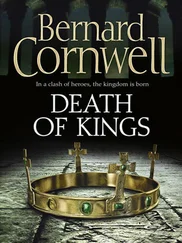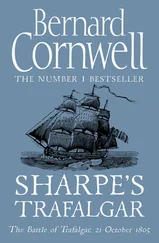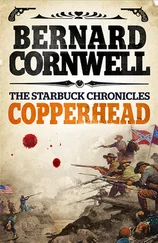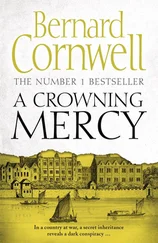Yet one of the aims of a chevauchée was to bring the enemy to battle, so why not fight at Poitiers? There were excellent reasons to avoid a fight; not only was the prince outnumbered, but his army was tired, hungry and thirsty. The river might have been nearby, but the difficulties of carrying enough water up the hill were such that many horses were given wine to slake their thirst. The outlook must have seemed bleak to the English, and their best hope was either to escape southwards and outmarch the French or else hope to recover their strength and discover a place where the terrain was more helpful to a defensive battle.
Yet, in truth, the position the English and their Gascon allies occupied was strong, but now there are more puzzles. We know where the battle was fought, but the exact placement is frustratingly uncertain. The chroniclers mention the hedge, which was evidently a formidable obstacle, but the hedge has long vanished and no one can tell precisely where it was. There are two fords across the Miosson (the novel only mentions one), and it is not certain which was the scene of the opening fight. Most historians agree that it was le Gué de l’Homme, the ford closest to the village and abbey at Nouaillé. We do know that the Captal de Buch led the cavalry attack of about one hundred and sixty men, of whom one hundred were mounted archers, which provoked the French panic and disintegration, but we cannot be sure of where that attack took place. It probably curved round the north of the French, though some people suggest it went around the south (I have preferred the northern route). We know roughly where the prince’s army was drawn up. West of the village, now known as Nouaillé-Maupertuis, there is a bridge where once there was a ford, le Gué de l’Homme, and a minor road runs north from that bridge, passing the battlefield memorial as it climbs to the long ridge, and that road, once it gains the height, marks the Prince’s position. But from which direction did the French attack? There is disagreement. Some historians would have the attack coming from the north, while others prefer an attack from the west. Usually a visit to a battlefield will suggest answers, but I confess I found the topography confusing. I have preferred an attack from the west, simply because that approach looked easier to me, but there is no certainty. The French approach to the battlefield was from the north and, considering the difficulties of manoeuvring large bodies of men, an attack from the north makes sense (because that would have involved less manoeuvring), but the French were trying to stop the English crossing the Miosson so they could well have marched parallel to the prince’s position before turning to attack, a solution I have preferred. Any reader wanting a full discussion of the difficulties in placing the battle in the landscape should read Peter Hoskins’s excellent book In the Steps of the Black Prince (The Boydell Press, 2011).
If the exact placement of the battle is problematic, at least we do know the course of the fight. It began with the cavalry attacks on the two wings of the English army, attacks that were repulsed by archery. The attack on the ford was made through marshland and, at the opening of that fight, the archers’ arrows were making small impression on the heavily armoured French horses, but a quick move to the flank remedied that problem. Geoffrey le Baker, one of the battle’s chroniclers, recounts that the arrows either broke when they hit the armour of the horses and riders, or else ricocheted skywards. It’s a tantalising passage. Did he mean that the arrow-heads broke from the shafts? Or that the heads themselves broke? It was probably both, for certainly the arrow-heads were not made of good steel. Some were, most were probably not. But quick thinking saved the day. By moving to the flank the archers were able to aim at the unarmoured hindquarters of the horses. William, Lord of Douglas, who had taken two hundred Scottish men-at-arms to aid the French, was badly wounded in that fight (though some believe he survived to be wounded in the dauphin’s attack, while one chronicler contends that he fled rather than be captured when the fight was ending). Meanwhile the dauphin, the clever but ungainly Charles, led the first attack on the main English line, an attack that had to deal with the frustrating hedge. The fight was long and hard, but Anglo-Gascon discipline prevailed, the line was not broken, and after some two hours the dauphin’s men retreated. It should now have been the turn of the king’s brother, the Duke of Orléans, to lead his battle against the battered English line, but the duke chose to leave the battlefield. Why? We do not know. It seems King Jean ordered his heir to leave. The dauphin Charles had done his duty and the king presumably did not want to put him at further risk, and it seems he instructed the dauphin to withdraw and the duke chose to withdraw with him. So now two-thirds of the French army had gone, and the king was left to attack with his own battle. That was when the captal led the impudent charge, the French ranks were shattered and the real slaughter began. It took place, we are told, on le Champ d’Alexandre, but where exactly is that? Some claim it is a stretch of wetland beside the Miosson, but it seems improbable to me that the French would flee southwards and my exploration of the battlefield convinced me that le Champ d’Alexandre was the plateau of the flat-topped hill west of the English position. But wherever it was the Field of Alexander proved a death-trap to the French, and it was there that the king and his youngest son were captured. Men squabbled over who had taken Jean le Bon prisoner, but the Earl of Warwick and Sir Reginald Cobham took charge of the king and of his son and escorted them back to Prince Edward who treated the royal captives with elaborate courtesy.
The main battle was fought on foot. The Lord of Douglas advised this, knowing that archers were much less effective against foot soldiers than against horses, which makes it ironical that Douglas was probably wounded while on horseback. The archers at Poitiers were decisive in the defeat of the two French cavalry charges, but made little impression on the main battles, who attacked on foot. The arrows were certainly a huge nuisance to the French. The arrow storm forced them to advance with their visors down, and each arrow blow, even if it did not pierce armour, was like being hit with a hammer, but the evidence suggests that the plate armour of the French was sufficient protection. The same thing was to happen at Agincourt. The French attacks there were inundated with arrows, yet still the men-at-arms reached Henry V’s line to engage in hand-to-hand fighting. And, of course, archers were formidable opponents in such fighting. The huge bodily strength needed to draw a longbow made them lethal when they wielded a pole-axe or any other hand weapon.
The English prevailed at Poitiers. There were two main reasons. First, the Anglo-Gascon command was efficient. The army had mostly been together for more than two years, their commanders were experienced, and though there was undoubtedly some rivalry, those commanders cooperated and, above all, trusted each other. The Earl of Warwick began the day expecting to lead his battle in retreat, but changed his tactics when events dictated a change, and did it quickly and effectively. The young Earl of Salisbury commanded the defence of the English right with admirable stubbornness and a personal display of bravery. The final cavalry charge, ordered by the prince, was timed to perfection and was devastating. In contrast, the French command was clumsy in the extreme. King Jean fed his troops piecemeal into a battle from which many fled without orders, and there was bitter rivalry between some of his senior commanders.
Читать дальше
Конец ознакомительного отрывка
Купить книгу












